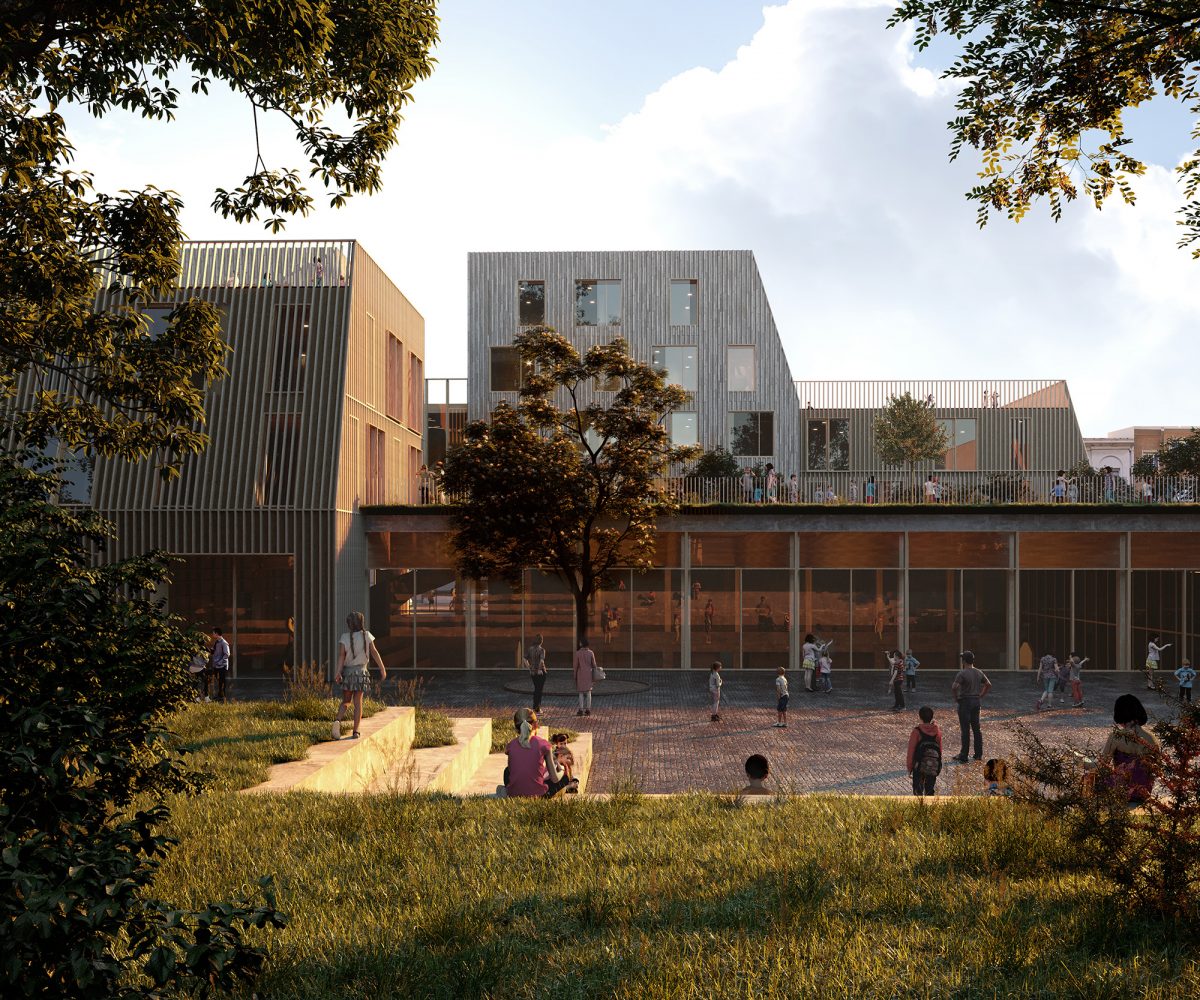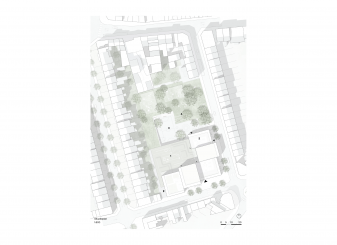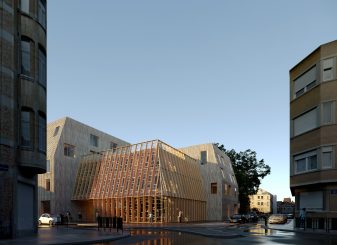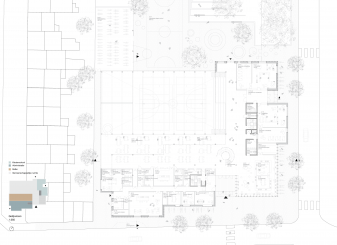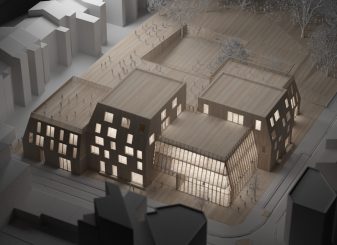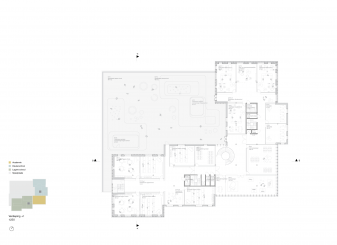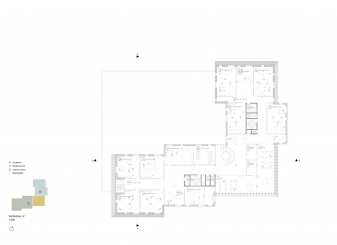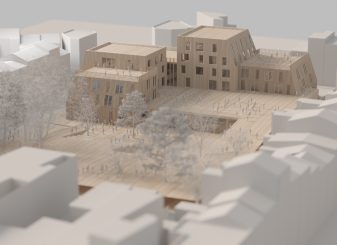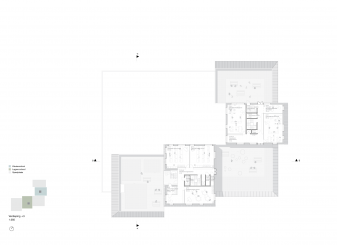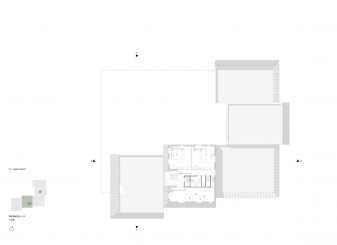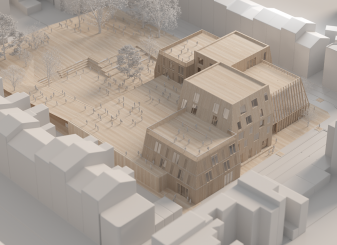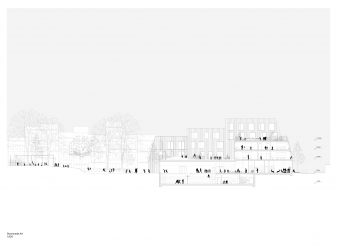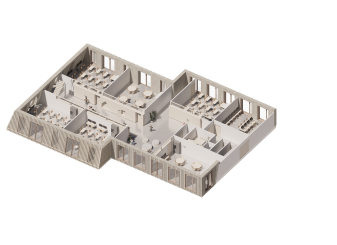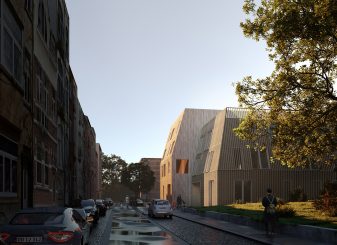Droomboom
Droomboom
2020
Location
Laken, Belgium
Client
Brussels City
Typology
Education, Culture, Public, Landscape
Size
7.677 m2
Status
Competition
Partnerships
Cobe architects, Boydens engineering, UTIL, StudioMDA
Connecting public green spaces in ‘the green network’ initiative in Brussels is in line with the socially sustainable ambitions of this project. The design builds on the current urban structure and additionally creates diverse landscapes. An open courtyard among all the closed courtyards in the dense urban fabric with a dual functionality: for school and neighborhood. The landscape is with its natural slope integrated throughout the school’s classrooms, green roofs and roof terraces. The school’s typology is derived from the neighboring residential typology, facilitating public space on the sidewalks by breaking up in smaller volumes and highlighting entrances. Classrooms and group areas are organized around generous collective spaces and benefit from optimal daylight conditions.
Droomboom was developed for disassembly and longevity, selecting various circular design qualities developed by members of our team at the VUB. The resulting design choices and qualities were tested with the GRO sustainability meter and form a lever towards a sustainable and circular building economy. The project does not contain high-tech but low-tech solutions that can still be maintained and applied in the long term. The ecological footprint is limited by using an open support structure consisting of hybrid wood-concrete elements. The independence between the structure, infill and techniques of the building ensures a high degree of flexibility and a longer life span. Using BIM, we manage data regarding the materials used in the project and their potential value for reuse, origin, healthy or not, and ecological footprint. By incorporating change-oriented building for a circular economy into the evolutionary design process from the outset, we were able to make beneficial decisions for the user.
We handle nature-inclusive design, based on the functionality and uniqueness of the site. The solution is management-oriented (less maintenance) and the result of passionate design research into ecology, water management, water permeability, natural shading solutions, informed plant choices, biodiversity and the total mitigation of the heat island effect.

